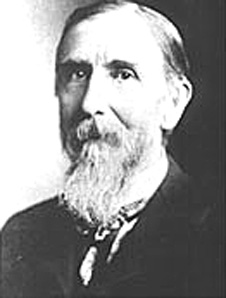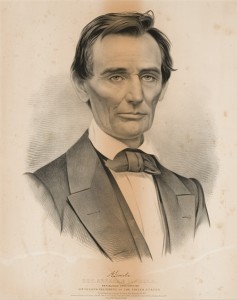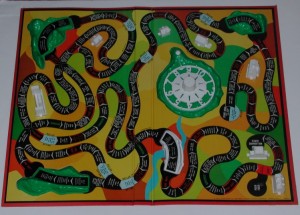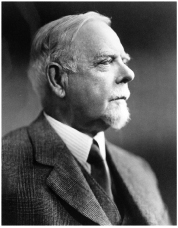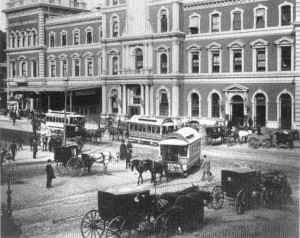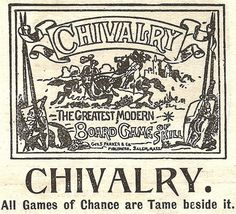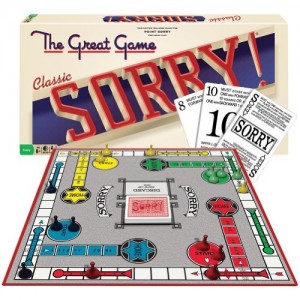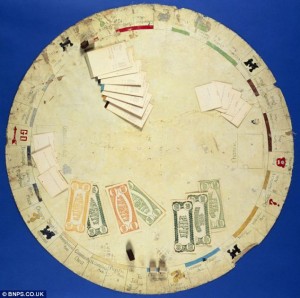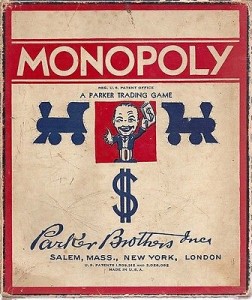Games have been an integral part of the world’s social and cultural history for the last six thousand to five thousand years. Games of ancient civilizations like the Ur Game, Senet, and Hnafentafl helped build the basis and popularity of board games that would stretch into modern times. Games like backgammon, chess, checkers, dominoes, and cards had been played in the United States since colonial times. Yet, it would take the changes brought by the nineteenth century to inspire Milton Bradley and George Parker to design some of the first inherently “Americanized” board games. Milton Bradley’s “Game of Life” and George Parker’s (Parker Brothers, Inc.) “Monopoly” would set the United States into a board game frenzy. “Monopoly” and “The Game of Life” would be produced on a large scale mass production yet to be seen. However, the manner in which the board game pioneers captured their audiences created a distinct fork in the mechanics and themes of games and how history would influence future editions and game designs.
Milton Bradley was born in 1836 in pre-civil war Maine (Lepore 2012, p. XXIV). The nineteenth century was a time of technological innovation and urbanization. These conditions allowed for Bradley’s technological, scientific, and mathematical skills to flourish. Bradley would take these skills to attend the prestigious Lawrence Scientific School which would go on to become a part of the Harvard University educational system (Shea 1973, p. 9). Yet, this education would be cut short when the Bradley family moved to Hartford forcing Bradley to give up his studies at Lawrence. Hartford would not provide the same educational opportunities. Bradley would look elsewhere to become a successful businessman. Bradley would acquire a position at Wason Locomotive Car Works in Springfield (Shea 1973, p. 9). His stint at Wason under the guidance of George Tapley would launch Bradley into the lithograph business and the founding of the Milton Bradley Company and Patent Solicitation.
Bradley would secure one of the few lithograph presses in the United States in 1860. In the light of the upcoming presidential election, the Republican National Convention leaders would seek Bradley out to produce lithographs of the newly determined presidential candidate, Abraham Lincoln. Unfortunately, the lithographs featured Lincoln clean shaven. Yet Lincoln would gone on to grow out his iconic beard rendering Bradley’s stock of lithographs were no longer viable to possible consumers. The Milton Bradley Company stunted by these economic losses and the rumblings of possible civil war would basically bring Bradley back to square one. Until, Bradley was approached with an intriguing new business venture, a board game. This game was “The Checkered Board of Life.” This game, however, was not an entirely new concept. Games such as the “Mansion of Happiness” and “Mansion of Bliss” were early predecessors of Bradley’s initial game. These predecessors sought to do something slightly different with their games. These games had moral themes. These games were intended for children. During the course of the player’s life, they can encounter sins like “ingratitude” or breaking the Sabbath (Lepore 2012, p.XXIII). The player would then be punished accordingly such as the whipping post. They sought to impress upon their audiences to seek out “life’s final destination”, the “heavenly mansion” (Lepore 2012, p.XXII). These games probably found much popularity and favor with parents, but children would be less interested in this serious and strict game.
“The Checkered Game of Life” did differ from the other so called “life” games. Players were no longer trying to lead a “sin free” life and keeping their souls out the clutches of the devil. Players were seeking like Bradley himself to secure a piece of the great American life and the successes that come with that. Success in the acts of everyday life took priority over reaching the golden gates of the heavenly afterlife. Squares describing sins were replaced by “perseverance” and “suicide.” In order to achieve the required one hundred points, players had to make strategic choices in the very beginnings of the game. Educational choices early on in the game gave players a greater chance of reaching “Happy Old Age” worth over half of the required points to win the game. Lepore (2012) makes certain that readers understand that even though the chances of completing the educational journey are slim this does not rule out
the opportunity for the player to win the game (p.XXVII). Only moral values that aided players in reaching the pinnacle of success were encouraged such “industry” and “honesty.”
“The Checkered Game of Life” launched Bradley unto the path of both wealth and success. Eight years after the introduction of this game to the American public Bradley was the leading board game producer in the United States (Shea 1973, p. 10). The 1860 original was revamped in 1960 and was re-named “The Game of Life.” Retirement in the “Millionaire Estates” was equivalent to the “Happy Old Age.” Each of the squares had certain monetary rewards or punishments. Morality had been totally removed from the game. No longer did players have choices rather a singular choice; to pursue higher education or join the work world immediately. This singular choice had monetary effects that would be felt till the end of the game. This materialistic version “Life” was highly popular for children seeking to experience the illustrious world of adulthood: marriage, children, and real estate purchases. The 1990’s version of “Life” would attempt to introduce “Life Tiles” that rewarded players for character building actions. However, the rewards given out to players upon completion for their “Life Tiles” was none other than money. The Milton Bradley Company acquired by Hasbro would go on to release another version of “Life” in 2007 that would even introduce mortgage and credit cards. Money, wealth, debt, success, and poverty were are all just parts of the “Game of Life.” Without it, one would never reach the pinnacle of happiness that equated a life fulfilled.
George Swinnerton Parker was born in 1867 in a post-civil war Massachusetts. Parker was born into world that had been devastated by the effects of a war and changed the economy of an entire country. Bradley’s father was a ship captain by trade, but looked to the realms of business for greater success. His real estate venture took the Parker family to Medford. However, the quest for success in real estate was cut short in the wake of an economic downturn (Orbanes 2004, p.2). Mr. Parker had to attempt to stave of complete economic despair when he died just a few years later. Quite like Bradley, Parker played the “Mansion of Happiness.” However, the promotion of moral values of these early board games did not favor in the eyes of the young George Parker. Therefore, at age sixteen, Parker took matters into his own hands and designed a new game far from “the whipping post” and the “Sabbath breaker” (Orbanes 2004, p. 4). This new game was titled “Banking.”
The “Banking” game challenged players to “speculation” which basically comprised of drawing a singular card in order to derive a match. This would require that players seek to borrow from the bank at an interest rate. The player with all the cards won (Orbanes 2004, p. 4). Orbanes (2004) makes the point that this new interest in the world of banking and the stock exchange can be attributed to the slowly increasing confidence of the American public in their banks and their vaults of paper money (p. 4). The goal of the game was simply to become the most profitable player in the game not to achieve moral high ground or reach the pinnacle of happiness. Parker’s game was essentially a novelty, therefore; the game was highly popular amongst Parker’s brothers and peers.
Parker’s very early attempt to pitch his game design was initially met with failure, but Walter Baker encouraged Parker to just publish the game himself (Orbanes 2004, p.4). So, Parker did just that. Parker worked to save enough money to contract a printer to create his game set that he paired with his detailed and structured set of game rules. Parker took his newly created games sets to the businessmen of Boston. He was met with early moderate success. This pushed Parker to take his convincing sales pitch to other locations such as Providence, Salem, and Winchester. The young Parker was able to sell almost all of his copies and returned to Medford as a hometown celebrity. Parker was still just a teenager so after his return to high school he was only able to devote his afternoons and weekends to his game design business. Yet, he was still able to produce two more games during this time (Orbanes 2004, p. 6).
Parker’s poor health forced him to leave his first job as a budding journalist at his brother’s newspaper. He took his ambition and talent for the board game industry to New York City to expand his product line and market. Parker was able to strike a deal with the Singer Company which was in direct competition with firms such as Milton Bradley and McGloughlin Brothers (Orbanes 2004, p, 4). In this position, it became apparent that Parker was quite adept at marketing his product to potential clients and unskilled in managing the paperwork and financials that game with the retail business. George Parker’s older brother Charles stepped in to help with the more behind the scenes aspects of the board games business. This gave the younger Parker an idea. He proposed that he and Charles partner in the board game business. George would handle the game design and sales. Charles would handle investments, financials, and the bookkeeping. In the spring of 1885, Parker Brothers was officially born (Orbanes 2004, p. 12).
The Parker Brothers Company published many games in the following years both in and out of the board game genre. Games such as “Chivalry” that would later become “Camelot”, British favorite “Tiddly Winks”, “War in Cuba”, “Ping Pong”, various puzzles, and “Sorry.” Yet, in 1935 the Parkers Brother Company was crumbling under the financial effects left by the Great Depression and desperately searching for a game to once again stimulate the company back to its former glory. “The Game of Monopoly” would be just the right answer to the financial woes. The company executives got word of this new game and sought to find the game designer, Charles Barrow (Orbanes 2004, p. 92). Parker Brothers successfully purchased the remaining inventory and rights for “Monopoly.”
“Monopoly” was essentially a game of real estate management. Players would buy and sale various properties around the board. Players sought to buy entire color groups of properties in order to set up houses and hotels that would garner larger rent profits than just holding the property deed. Typically, it was a multiplayer game of upwards of five to six players. Barrow’s game would undergo some changes before Parker would release the first edition of the beloved game. The aged game board designer took it upon himself to re-write the rules of the game. Orbanes (2004) states that it required two days alone for Parker to write rules concerning dice rolls of doubles (p. 94). The unemployed Barrow did not have the resources to create specially designed game pieces, therefore; he encouraged the use of items that most players would have access to such as a thimble (Orbanes 2004, p. 94). This would inspire parker to create game pieces that resembled household items like the wheelbarrow, shoe, and the thimble. Other changes included changing income tax percentages, altering the play money, and other design details.
“Monopoly” is a highly competitive game. In order for a player to win a game, their monetary and property supply had to outlast any rent payments that could be occurred. The ultimate goal is to put all other players into bankruptcy with high rent payments. This put players into direct competition with one another. This requires property trading, partnerships, and secret deals. “Monopoly” was just what the American public wanted. In 1936 alone, Parker Brothers would sale 1.8 million copies of “Monopoly” and turn a profit of over one million dollars (Orbanes 2004, p.103). While there are certain life events mentioned throughout the board, community chest, and chance cards, “Monopoly” is not a game to teach children about the importance of moral values in conduction of business transactions. Parker’s game would seek to do what he had set out do with his very first creation, “Banking”, create game purely for the enjoyment, the challenge, and the excitement. The American public seemed to be longing for the very same thing.
Milton Bradley and George Parker illustrate the greater change happening to the American landscape physically, socially, culturally, and economically in the midst of the nineteenth century. The nineteenth century was a time of great urbanization, technological innovation, and industrialization. Gunther Barth (1980) quoted an 1860’s observer of the American nineteenth century environment, “”Money is the habitual measure of things, the only secure power, the only real distinction’” (p. 20). This belief is evident in the newly implicated labor policies coupled with more effective production transformed everyday life.
Prior to the nineteenth century, work was from sun up to sun down. The nineteenth century day was now divided into three segments: eight hours for work, eight hours for play, and eight hours of sleep. These free eight hours of play were new and exciting. This would lead to the increase of games that would be visible throughout the nineteenth century and into the future. These games would include the growth of baseball and the American board games that front runners like Milton Bradley and George Parker would design and produce in the upcoming years of the nineteenth century and onward. After a hard eight hours of labor in less than optimal conditions, nineteenth century urban dwellers sought something enjoyable for their eight hours of play. “The Game of Life” and “Monopoly” channel this idea of freedom from a harsh controlled environment. These new game designs put control into the hands of the players. In addition, increased disposal income allowed for the market in which these games would be sold to expand to the middle class and upper lower class.
The question is, did the nineteenth century alter the culture and society of America in a positive manner? Gunther Barth (1980) did not have a high opinion of the changes of the nineteenth century. He states:
“the new forms of urban life that supported such as reading the newspaper on Sunday or spending salary on clothes, were just one more sign of erosion of the thrift and piety, prudence and self-reliance, those attributed of rural life that they considered the basis of the nation’s social integrity, economic stability, and political wisdom” (p.22).
However, it is difficult to so quickly label the changes of the nineteenth century and their subsequent effects on the American board game industry as the erosion of national integrity. These games have outlasted their creators and intended audiences by decades. Games like “Life” and “Monopoly” have given generations of not only Americans but players around the world moments of enjoyment and happiness with friends, family, and perfect strangers. These games have lasted because these moments had positive impacts that had players coming back time after time.
Reference Page
Barth, G. (1980). City People: The Rise of Modern City Culture in Nineteenth-Century America.
Oxford: Oxford University Press. Print. Pages 20-22.
Lepore, J. (2012). The Mansion of Happiness: A History of Life and Death. New York: Vintage
Books. Print. Pages XV-XXXII.
Orbanes, P. (2004). The Game Makers: The Story of Parker Brothers from Tiddly Winks to
Pursuit. Boston: Harvard Business School. Print. Pages 2-103.
Shea, J. (1973). The Milton Bradley Story. New York: Newcomen Society of North America.
Print. Pages 5-11.
By: Rae Mann
